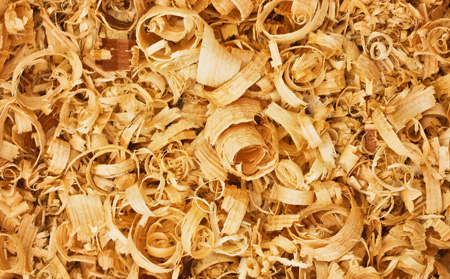Using less fossil-based raw materials while limiting greenhouse gas emissions: this is the two-fold advantage of bio-sourced materials which by definition are made from plant biomass!
Is the future in materials made from biomass or "biosourced" material? Biomass is not only readily available all over the world in high quantities, its end of life degradation does not produce more CO2 than was needed for the plant to grow. Bio-sourced materials are already being used in many applications in the building and construction sector as insulants (vegetable fibre wools, recycled textile, cellulose wadding, hemp shives, shives, straw bales, etc.), panels (vegetable particles or fibres, compressed straw, etc.) but also to create plastic composite materials (matrices, reinforcement fibres, fillers), in addition to textile, paper, packaging, energy, chemistry (adhesives, adjuvants, paints, etc.).

After petrochemistry, now comes sugar chemistry?
Biorefining, where biomass is used to make chemical products, energy and materials, may be an attractive alternative to petrochemistry. These questions are at the centre of the research work carried out by several teams at the LGP2 (Laboratory of pulp and paper sciences and graphic arts) and a graduate course dedicated to this area is taught there. The material extraction processes are studied in advance. Traditionally, a portion of the material is dissolved and burnt during the manufacturing of the pulp. The C6 sugars from softwood hemicelluloses can for example be used to manufacture monomers for producing plastics (as in the Polywood project). For their part, C5 sugars from hardwood hemicelluloses can be used in various industrial applications. Another area of research at the laboratory is biomaterials and in particular biomaterials used for packaging. Several European projects, to which the laboratory contributed, have already been carried out on this topic. The intention is to manufacture polymers from monomers that are naturally present in or extracted from biomass, or to achieve efficient nanostructured materials such as nanocelluloses.
Ultimately, biomass has the potential to replace much of the 250 to 300 million tonnes of oil used to power the chemical industry and materials.
SUMMARY
- Architectured materials: paving the way for eco-design?
- Grenoble INP, recognised expertise in materials
- Enhanced environmentally-friendly processes
- Tomography: a journey to the heart of the matter
- Additive manufacturing revolutionises materials
- Bio-sourced materials are the way to the future
- The EcoMarch project
- From laboratories to start-ups
Grenoble IN'Press
Contact
- Vice-présidente Innovation et Relations entreprises
Gaëlle Calvary - Directeur de la DRIVE
Cédric Di Tofano Orlando
Tél. 04 76 57 43 16 - Annuaire





